WBBSE Chapter 2 Some Streams Of The Political History Of India 7th To 12th Century A.D Bengal In The Middle Ages
Geographical divisions:
The boundaries of ancient Bengal were demarcated by three main rivers the Padma, Meghna and the Bhagirathi. At that time main parts of ancient Bengal were Banga, Varendra, Bangal, Radha, Pundravardhan, Gouda, Samatata and Hariket.
These names had come from the names of clans of ancient Bengal. Pundravardhan consisted of a vast part of Bengal like West Bengal and Bangladesh (Dinajpur, Bagura, Rajshahi and Pabna).

“WBBSE Class 7 History Chapter 2 notes”
Read and Learn More WBBSE Notes For Class 7 History
The Gupta rulers treated Pundravardhan as a part of the ruling area or “Bhukti”. “Varendra region” was situated between the Bhagirathi and the Kartoa. Banga was a region in between the Bhagirathi and the Padma looked like a triangular-shaped delta region.
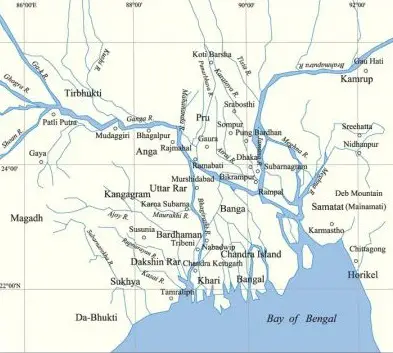
Once on the West side of the Bhagirathi, Radha and Sungha regions separately emerged that changed the boundary of Bengal. In the 11th century, Banga was the land of Dhaka, Faridpur, Bikrampur and Barishal of, Bangladesh.
Bengal was the Southern part of Banga. Radha was divided into North and South. The Southern Radha was called “Bajrabhumi” and the Northern Radha was called “Suvarnabhumi”.
In the Middle Ages, Bengal was divided into three parts Bengal, known as Varendrabhumi or Varendri or Pundravardhan; West Bengal. known as Raradesha and East Bengal known as Banga. These three parts together were known as Bengal.
Gauda Kingdom:
After the downfall of the Gupta empire, the kingdom of Gauda gained prominence in eastern India. Before the advent of Harshavardhan, Sasanka established an independent kingdom at Gauda (present-day North Bengal).
He was a powerful king and his capital was Karnasuvarna (presently known as Rangamati or Rakta-Mrittika near Berhampore in Murshidabad district).
Achievements of Sasanka (606-637 A.D.):
Not much is known about the family history of Sasanka. Probably he was a feudal chief under Mahasenagupta-a Gupta king of Magadha. Later in 606 A.D., he conquered North Bengal (then known as Gauda) and established an independent kingdom there.
“Some Streams of the Political History of India WBBSE notes”
He is considered to be the first ‘Sovereign ruler of Bengal’. Sasanka was also the first king of Bengal who extended his empire beyond Bengal. Other than Kamrup, the whole of northeast India was under his rule.
Sasanka adopted the title of ‘Narendraditya’ and was also known as ‘Gaudadheep’-the ruler of Gauda. Sasanka was a worshipper of Shiva. Devagupta, the king of Malwa was his friend.
After the death of Prabhakarvardhan of Thaneswar, Sasanka and Devagupta led a combined attack against Kanauj. Grahavarman, the king of Kanauj was defeated and killed. His wife Rajyashri was taken to prison.
She was the daughter of Prabhakarvardhan and the sister of Rajyavardhan and Harshavardhan. To avenge Grahavarman’s death, Rajyavardhan attacked, defeated and killed Devagupta.
Chapter 2 Some Streams Of The Political History Of India 7th To 12th Century A.D Gouda Under Sasanka
The original name of Sasanka was Narendraditya. He occupied a higher position among ancient Indian rulers. As the first Bengalee ruler, he founded an empire. He had a remarkable position in Indian politics.
The word ‘Sri Mahasamanta Sasanka’ was mentioned in an inscription found in Ratasgarh, Bihar. From it, one can assume that he started his career as a feudal chief under Gupta king Mahasenagupta of Bengal.
Later by taking advantage of the weakness of Mahasenagupta, he came to power. It was known from the ‘Ganjam inscription’ that from this time, the independent Gouda state was developed.
But it was mentioned in the Buddhist text ‘Aryamanjusri mulakalpa’ that there was no existence of independent Bengal before 525 A.D. He established the independent Gouda state by conquering Ganjum, Kangod, Utkal, Magadha, Venaras, Danbadhuti or Dantan in 606 A.D.
“WBBSE Class 7 History 7th to 12th century A.D. summary”
He developed the administrative system in Bengal in 619 A. D. After developing a friendship with the Malwa king Devagupta, Sasanka fought with the kings of Maukhari of Kanauj and Pushyabhuti of Thaneshwar.
The Maukhari-raj Grahavarma and the king of Thaneshwar Rajyavardhan were killed by Sasanka. So the next king of Thaneshwar and Kanauj, Harshavardhan wanted to give severe punishment to Sasanka.
Harshavardhan made a friendship relation with Bhaskarvarman, the king of Kamrup. He founded the future basis of the Pala empire. But Harshavardhan could do nothing of Sasanka till his death in 637 A.D.
His worthless son Manabadeva ruled for 5 months and 17 days and then anarchy prevailed in Bengal, which was known as “Matsyanyaya”.
Matsyanyaya
Sasanka, the first sovereign ruler of Gauda died in 637 A.D. His inefficient son Manabadeva ruled only for 5 months and 17 days. After that as there was no ruler in Bengal, a political Vacuum prevailed, Bengal saw extreme political indiscipline, uncertainty and anarchy.
West Bengal Board Class 7
This political disturbance and anarchy is known as Matsyanyaya. Matsyanyaya means like a fish. The summary of the word meant-“As the big fishes are fed by the small fishes similarly the weak were devoured by the powerful people of Bengal-that is known as Matsyanyaya”.
This period of matsyanyaya existed from 637-750 A.D. in Bengal. The powerful people exploited the weak to an extreme level. Kautilya referred to the torture of the powerful upon the weak as Matsyanyaya.
“Class 7 WBBSE History Chapter 2 important questions”
There was no law and order in this country without a king. The powerful men went on to show their process. The main feature of politics was that might is right. Taking advantage of this anarchy many people began to attack Bengal from outside the province.
These forces were
- The attack of the Shaila Tribes of the Himalayas on Bengal.
- The invasion of Jasobarman of Kananuj is known as the gandobaho of Vakpatiraj.
- The attack of Bengal by Lalitaditya Muktapira and Jayapira of Kashmir and
- The invasion of King Bhaskarbarman of Kamrupa.
In this situation, the sufferings of the Bengalee people are known from the writings of the Tibetan historian Taranath. To get rid of this anarchy and to establish political and administrative order, the ‘Prakritipunja’ (elites of Bengal) restored a Kshatriya, named Gopala on the throne of Bengal.
King Bangapati Gopala sat on the throne and was given all power. This incident had been compared with the ‘Meiji Restoration’ of Japan of 1868 A.D. Anyway, Gopala introduced an age of enlightenment by ending the hundred years of anarchy as the first elected king of Bengal.
Chapter 2 Some Streams Of The Political History Of India 7th To 12th Century A.D Harshavardhan
Harshavardhan ascended the throne of Thaneshwar in 606 A.D. He was only 16 years of age at that time. The responsibility came upon him after the death of his father Prabhakarbardhan and the accidental death of his eldest brother Rajyabardhan by the conspiracy of Sasanka and Malwaraj Debagupta.
In the meantime, his brother-in-law and king of Kanuaj Grahavarma also died. So with the requests from the members of the royal court, he was enthroned for Kanauj and Thaneshwar taking the title- ‘Yuvraj Shiladitya’ Prof. Smith said in his book, “He was, in short, a great warrior in camp, a statesman at court.
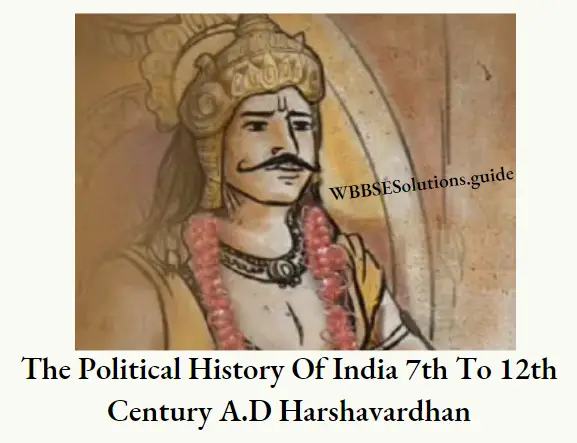
A poet in his palace and a devotee in the temple, a refined diplomat and a respected despot; he was a worthy successor to the glories of the Mauryas and the grandeur of the Guptas.” The term ‘Harsha era’ is calculated from the period of his enthronement.
Expansion Of Empire
Just after being the king, he started conquering Punjab, Rajputana, Gujarat and even the regions around the river Narmada one by one. But according to R. K. Mukherjee, there is doubt about whether Kashmir was under his empire or not.
“Political History of India Class 7 WBBSE question answers”
He extended his empire up to Bangladesh in the east. But he captured Banga only after the death of Sasanka. Bhaskarbarman, the king of Kamrup and Harshavardhan shared Gour within themselves after the death of Sasanka in the year 637 A.D.
Chalukya ruler Pulakeshin II. This was mentioned in the ‘Aihole Prashasti’ of Ravikirti. Harshavardhan, after his conquests, took the titles ‘Sakolottarpathanath’ and ‘Uttarapathnath’. Harshavardhan renovated his military system.
His military division was divided into four classes-infantry, cavalry, chariots and war elephants. But the cavalry regiment was comparatively larger. Infantries were called ‘Bar’ and ‘Bhat’.
The soldiers had to follow a very strict discipline. His military force consisted of 1,00,000 infantry, 40,000 cavalry and 60,000 war elephants. Harshavardhan was equally interested in art and culture.
‘Harshacharita’ and ‘Kadambari’ written by the poet Banabhatta are worth mentioning. The presence of Mauryan poets Bhartrihari, Matanga, Dibakara and Jaisingh also enriched his royal court.
Harshavardhan himself proved his eminence by writing the dramas like ‘Nagananda’, ‘Priyadarshika’ and ‘Ratnabali’. Dr Amalesh Tripathi thought that ‘Harsha seems to have wielded his pen with no less dexterity than the sword.’
Chapter 2 Some Streams Of The Political History Of India 7th To 12th Century A.D The Pala Dynasty Of Bengal
A person named Gopala established political peace and harmony in Bengal by abolishing the conflict between political instability and ‘Matsyannya.’ So the upsurge of the Pala kings in the history of Bengal was a unique phenomenon after the death of Sasanka (637 A. D.)
Gopala (750-770 A. D.)
With the request of the ‘Prakritipunja’ of Bengal, Gopala became the king of Bengal. Though he was of Kshatriyan origin, yet he did not belong to any royal family.
The whereabouts of Bappat and Dayitavishnu, the father and grandfather of Gopala respectively were not known much. But Deddadevi, the wife of Gopala was from an aristocratic family.
Dharmapala (770-810 A.D.)
After the death of Gopala in the year 770 A.D. his able son Dharamapala became the king of Bengal. He was called ‘Uttarapathaswamin’ in ‘Udaysundari’ lyrics by a Gujarati poet Soddhal recognising his supremacy.
From the ‘inscription of Khalimpur’, many regional kings of north India surrendered to Dharmapala in a conference held in Kanauj after he had conquered the entire north India.
Among these were-
- Bhoja (Berar),
- Matsya (Jaipur and Alwar),
- Madra (Central Punjab),
- Kuru (East Punjab and Thaneshwar),
- Keer. (Kangra Valley of Punjab),
- Yaban (Muslim state of Indus),
- Jadu (Saurashtra),
- Gandhara (East Punjab),
- Avanti (Rajputana) etc. were of special importance.
Devapala (810-850 A.D.):
Devapala, the son of Dharmapala became the king of Bengal in 810 A. D. He also ruled for 40 years like his father (850 A. D.). Like a great warrior, he built up a large empire by applying the ‘Blood and Iron policy’.
It was mentioned in the ‘Badal Prashasti’ and the ‘Haragouri Inscription’ that from the Himalayas in the north to the Vindhyas in the south and from Assam in the east to the coastal region in the west were included under his kingdom.
He defeated Pratihararaj Bhoja I and Rastrakutaraj Amoghvarsha I during the tripartite struggle. Devapala also defeated Dravida king Srimar Sri Ballava of the Pandian state.
According to Dr R. C. Majumdar by following the principle of his father he did not reduce the independence of the states like Pandian and Karnataka on the south of the Vindhyas which he had conquered.
His fame spread outside India like Java Island, Sumatra and Malay. Balaputradeva, the king of the Shailendra dynasty of Sumatra, built a Buddhist monastery in Nalanda comprising five villages, after having permission from Devapala.
The Arabian traveller Suleman praised very high about the army of Devapala. After the death of Devapala in 850, Bigrahapala I (850-854 A. D.). Narayanpala (854-908 A. D.), Rajyapala, and Bigrahapala II became the kings of Bengal respectively.
During Mahipala I’s reign (988-1038) even though Rajendra Chola invaded Bengal, but could not establish any permanent impact (1021-23 A. D.).
Over the above, due to the revolt of Kaivarta in North Bengal under the leadership of Bhim and Divya of Barendrabhumi, the situation turned into a fireball. Mahipala II could do nothing.
“WBBSE Class 7 History Chapter 2 textbook solutions”
After the death of Mahipala II his brother Rampala (1084-1130 A. D.) became the king of Bengal. ‘Ramcharita’ (A comical writing) written by his court poet Sandhyakar Nandy was nothing but the biography of Rampala.
Rampala could not defeat Anantavarmana Chorganga, the king of Kalinga (founder of Konark Sun temple). But he established a friendly relationship with Kulotungo-1, the king of the Cholas of far-south to dominate Anantavarman.
Mahipala I was defeated to Gangeyadeva Kolchuri in 1026 A. D. But he was called the ‘Second founder’ of the Pala Dynasty because it was revived by Mahipala due to his excellent military talent and expertise.
Mahipala constructed the Hindu temple of Kashi and two monasteries of Sarnath and Nalanda. Apart from this, he dug many ponds and built many cities.
Dr R. C. Majumdar rightly commented in his book History of Bengal, that a real unique rise of Bengal can be felt in every respect as a whole in the empire of Mahipala.
Mahipala II:
During the regime of Mahipala and just before the regime of his grandson Mahipala II the Pala empire became shattered due to invasions of Kalchuri king Lakxmikarna, Mahashivgupta Jajati the king of Orissa and Chalukyaraj I of Someswar.
Over and above, due to the revolt of Kaibarta in North Bengal under the leadership of Bhim and Divya of Barendrabhumi, the situation turned into a fireball.
According to Pandit Haraprasad Shastri and Dr S. P. Lahiri, The Kaibartas were farmers by profession and also a war-loving community.
Historian Grearson in ‘Bengal Gazetteer’ has said that the cultivators or farmers of Bengal and Mahisyas are Kaibartas. According to Dr Niharranjan Ray, Kaibarta is all of the fishermen’s community.
Mahipala II died while resisting this revolt. As a result, Kaibartas formed a separate independent state in North Bengal.
Rampala (1084-1130 A.. D.)
After the death of Mahipala II his brother Rampala became the king of Bengal. ‘Ramcharita’ (comical writing) written by his court poet Sandhyakar Nandy was nothing but the biography of Rampala.
From this text, it can be known that to resist the Kaibarta Revolt, he intelligently managed to bring some territorial kings into his camp. A list of thirteen kings is there in ‘Ramcharita’.
They are
- Jaisingh, the king of Danabhukti or Dantan.
- Birgun, the king of, Vishnupur or Kotatabir.
- King Laxmisur of Aparmanda or Hooghly.
- King Narasingha of Kajangal or Rajmahal.
- King Dwarapbardhan of Kaushambi or Rajshahi and the like.
Each one of them helped Rampala. Besides this, the Rashtrakuta king Tilak Mathan or Mahadeva on his maternal side, also helped Rampala a lot to revive Varendrabhumi. The Barman kings of Kamrup and East Bengal were defeated by him.
The kings of Garwal and Chalukkya also surrendered to him. Rampala did the mass killing of the imprisoned revolting Kaibartas by taking them to the ground for execution openly.
Rampala could not defeat Anantavarman Chorganga, the king of Kalinga. But he established a friendly relationship with Kulotungo, the king of Chola of the far south to dominate Anantavarman.
kings and kingdoms
The name of the newly-built capital of Rampala was Ramavati. Rampala was the last powerful king of Bengal. It is mentioned in Ramcharita that after ruling for 53 years, he committed suicide by jumping into the waters of the Ganges at the age of 80. The glorious chapter was closed permanently with the death of Rampala.
Chapter 2 Some Streams Of The Political History Of India 7th To 12th Century A.D The Reign Of Sena dynasty Of Bengal
Origin:
Many historians think that the original homeland of Senas was in Karnataka or Mysore or south India. Many army officers of Vikramaditya started living in Bengal during the time of invasion by Vikramaditya (1068 A. D.), the king of Karnataka.
Samantasena, the son of Viswasena was born in Bengal. This Samantasena was the founder of the Sena dynasty. His son Hemantasena founded an independent feudal state in Bardhawan of Bengal.
Vijaysena, the son of Samantasena founded an independent Sena dynasty in Magadha by defeating Madanpala, the last descendant of the Pal dynasty. It is said that Sens were ‘Brahma-Kshatriya’ by caste.
“Class 7 WBBSE History Chapter 2 PDF download”
It was mentioned in ‘Bombay Gazetteer’ of 1885 A.D. that for survival from the hands of Parashuram, the pregnant Kshatriya women disguised themselves as Brahmin women and the offsprings born from their wombs were called ‘Brahma-Kshatriya’.
After Palas, this Brahma-Kshatriya Sena dynasty ruled Bengal for a long time.
Vijaysena (1096-1158 A.D.)
Vijaysena, the son of Hamantasena was the actual founder of the Sena dynasty. It is known from the ‘Deopara Prashasti’ and ‘Vikrampur Copperplate’ that he enhanced his pride and prestige by marrying a princess of the Sena family.
He made a friendly tie-up with Anantavarma Chorganga, the king of Kalinga (Orissa) to establish complete dominance over Bengal.
In this process, he defeated King Nannyadeva of Mithila, King Dwarapbardhan of Koushambi, King Virsena of Kotatvi and the Pala king Madanpala of Bengal to maintain his supremacy.
He extended his kingdom from Brahmaputra in the east to Koshi and Gandak rivers in the west and Kalinga in the south. Vijaysena set up two Capitals in Vijaypur in West Bengal and Vikrampur in East Bengal.
Ballalsena (1158-1179 A. D.)
After the death of Vijaysena, his son Ballalsena became the king. He included Bengal, Barendri, Magadha, Mithila, Bagri or Sunderban, Midnapore area within his territory.
But Ballalsena was more interested in the maintenance of his empire and cultural bondage rather than conquests of other states. Being a scholar in Veda, Smritisashtra and Purana on the rituals of the Hindu religion Ballalsena wrote two texts ‘Dansagar’ and ‘Abdhutsagar’.
Pandit Anandabhatta wrote the biography of Ballalsena named ‘Ballalcharita’ as per the instruction of Buddhimant Khan the ruler of Nabadwip. Ballalsena, of his own, dug the ‘Ballaldighi’ and built ‘Ballalbari’ in Dinajpur.
The city of Gour was built by him, which in turn, became known as ‘Lakxmanabati’ by the name of his son Laxmansena. In the last phase of life, Ballalsena built some pilgrimages by the side of the Ganges for religious rituals.
But historian Dr Niharranjan Ray said that Ballalsena was a very conservative Hindu. The ‘Kaulinsm’ created by him, was the main cause of disparity and untouchability in society. So in the court of history, Ballalsena is accused time and again even today.
Laxmansena (1179-1205 A. D.)
Laxmansena, the son of Ballalsena, became king at the age of sixty. He showed much bravery and gallantry in his youth, in the battles with Kamrup, Kalinga and Gour during the regime of his grandfather Vijaysena.
He showed his military excellence even in his old age. At this time, he constructed the pillar of success in Prayag, Puri and Varanasi. He also defeated the king of Kanauj of Garwal.
As a recognition of his military power, he took the title ‘Goureswar’ and ‘Ariraj Mardan Shankar’. In the first part of his life, he was Shaiba but in the later stage he was devoted to the Vaishnab religion and took the title ‘Param Vaishnava’. The name of his royal poet was Jaideva.
Invasion of Bakhtiyar Khilji
The most important event during the regime of Laxmansena was the invasion of Bengal and Bihar by ‘Iktiaruddin Mohammad Bin Bakhtiyar Khilji’, the chief commandant of Qutubuddin Aibek.
It was known from the text ‘Tabkat-i-Nasiri’ written by Minhajuddin Siraj that in the year 1199 A. D., the soldiers of Bakhtiyar Khilji destroyed the monastery of Odantapur mistaken as a fort, and killed many Buddhist monks.
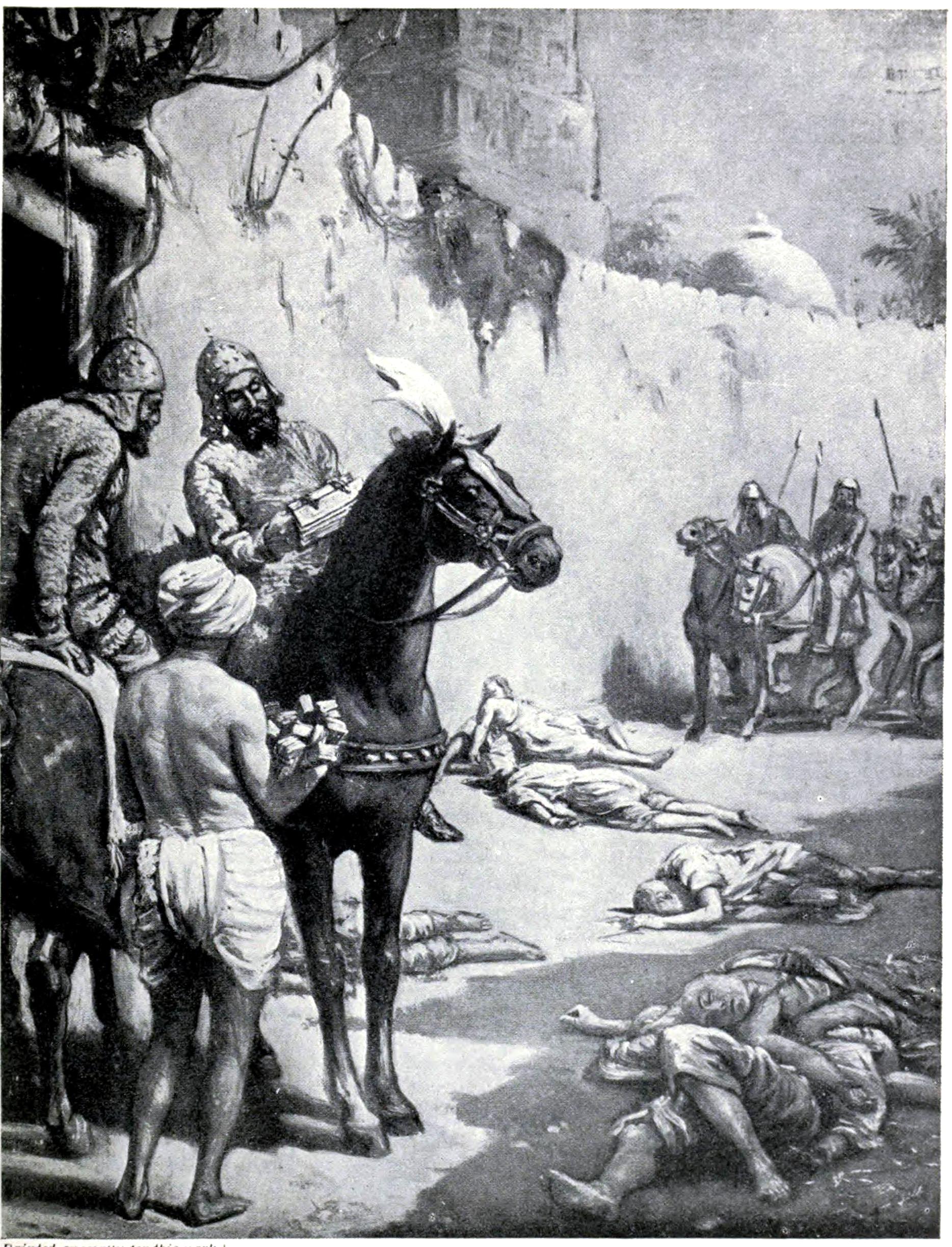
After that Khilji together with 18 subordinates disguised as Arabian horse traders, entered the place of Laxmansena in Nabadwip during lunchtime and attacked suddenly in 1201 A.D. Laxmansena somehow managed to escape and fled away to Srihatta in East Bengal by boat.
After reigning up to 1206, he died here. Though his sons Keshabsena and Viswarupsena were inefficient, yet they reigned up to 1260 A.D. But they could not achieve anything noticeable. After their death, the Sena dynasty declined forever.
Chapter 2 Some Streams Of The Political History Of India 7th To 12th Century A.D Chola Power Of South India
Chola dynasty:
The Cholas were a very old race of south India. The Chola empire was first established in the regions comprising Tanjore, Trichinapalli and Padukottai lying in between Pennar and Bhellar rivers on the south of Tungabhadra on the east coast.
This original homeland of Cholas was known as ‘Cholamandalam’. There are mentions of Cholas in Mahabharat, Buddhist text Mahabamsa, Milindponchho, Indica of Megasthenes, periplus of the Erythraen sea, Tamil Sangam Literature, Greek and Roman literature, an account of Hiuen Tsang, Inscriptions of Ashoka etc.
It is mentioned in the text of Ptolemy that the Cholas had two famous ports namely Kaveripattanam and Negapattanam. Karikal, the first historic king of Cholas, established his dominance over the entire Tamil state by defeating Panda, Cher and Ceylon.
After that Cholas became weak due to the rise of Chalukya, Pallavas and Rastrakut and became subordinate to the Pallavas. When Hiuen Tsang visited the Chola empire in the 7th century, he found the region as a desolated forest area.
Vijayalaya (850-872 A.D.)
Taking advantage of the conflicts between Pallava and Pandya, Vijayalaya released himself from the clutch of Pallavas and gained power. He captured Tanjore from the grip of Pandya in 850 A.D. and set up his capital there. He reigned independently up to 871 A.D.
Aditya I (871-907 A.D.)
Aditya I, son of Vijayalaya captured Kanku or Salem by defeating Gangos in the west. Aditya, I defeated and killed Aparajitabarman the last king of Pallava, Even though Pallavraj helped Aparajitabarman in the battle of Sripurambiuam against Pandyas.
Thus he expanded his kingdom from Madras to the Kavery River. Aditya, I was a devotee of Shiva.
Parantaka I (907-953 A.D.)
Parantaka I son of Aditya I captured certain parts of Madurai and Pandya states by defeating the kings of Pandya and Ceylon. He also defeated Banas and Baidambas. He took the title ‘Madurai Konda’.
He extended his kingdom up to Nellore in the north. But his eldest son Rajaditya was killed in the battle of Takkolam (949 A.D.) against Krishna III of Rastrakuta and Tanjore and Kanchi were captured by the Rashtrakuts.
Krishna III also took the title ‘Kanchi Tanjore Konda’. After this, Parantak I died in 953 A.D. with a broken heart. From this time onwards, the Cholas became weak for several years.
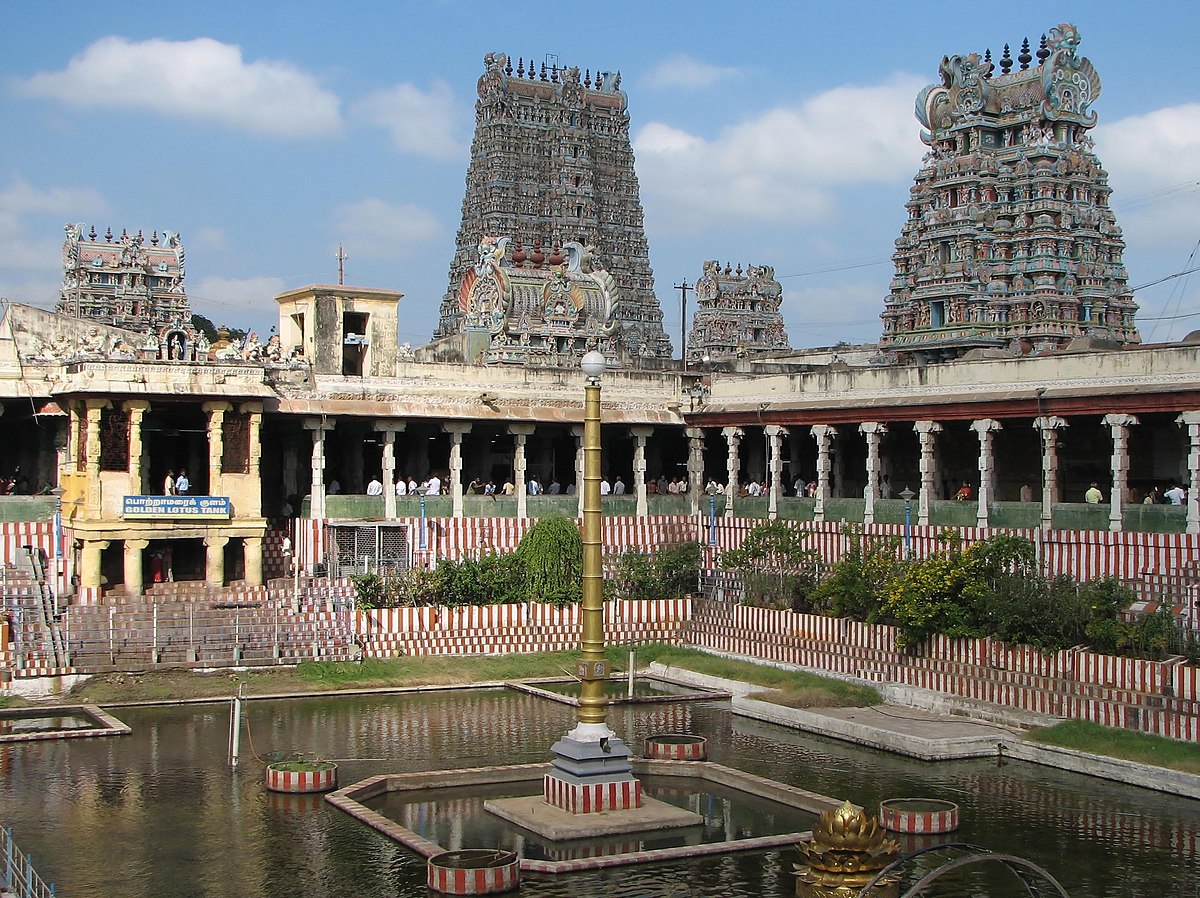
He covered the Shiva temple of Chidambaram with a golden sheet. He made considerable contributions in the fields of agriculture, education etc. After Parantak Sundar Chola defeated Vir Pandya and Rajrajeswar Temple of Tanjore drove away the Rastrakutas from Tondamandalam.
After Sunder Chola, Uttam Chola became the king in 973 A.D. and reigned for some time. At last Rajraj Chola, I became the king after Uttam Chola and introduced a golden age.
Rajraj Chola I (985-1014 A.D.)
Rajraj, the son of Sunder Chola, established a very large Chola empire by recovering the lost pride and prestige. The stories of his conquests can be known from the ‘Tanjore inscriptions’. He had a very powerful naval force.
He captured Kerala and Quilon by defeating Ravibarman, the king of Kerala in the battle of Trivandrum. According to Dr Romila Thaper, thus Rajraj built a very strong line of defence on the Malabar Coastal region to combat the Arabs.
He occupied Udgai Fort by capturing the Pandya king Amarbhujanga. He constructed a Shiva temple in Anuradhapura, the capital city of Ceylon by defeating Mahendra V, the king of Ceylon. Gangas of Mysore and Bimaladitya of Vengi were also defeated by Rajraj.
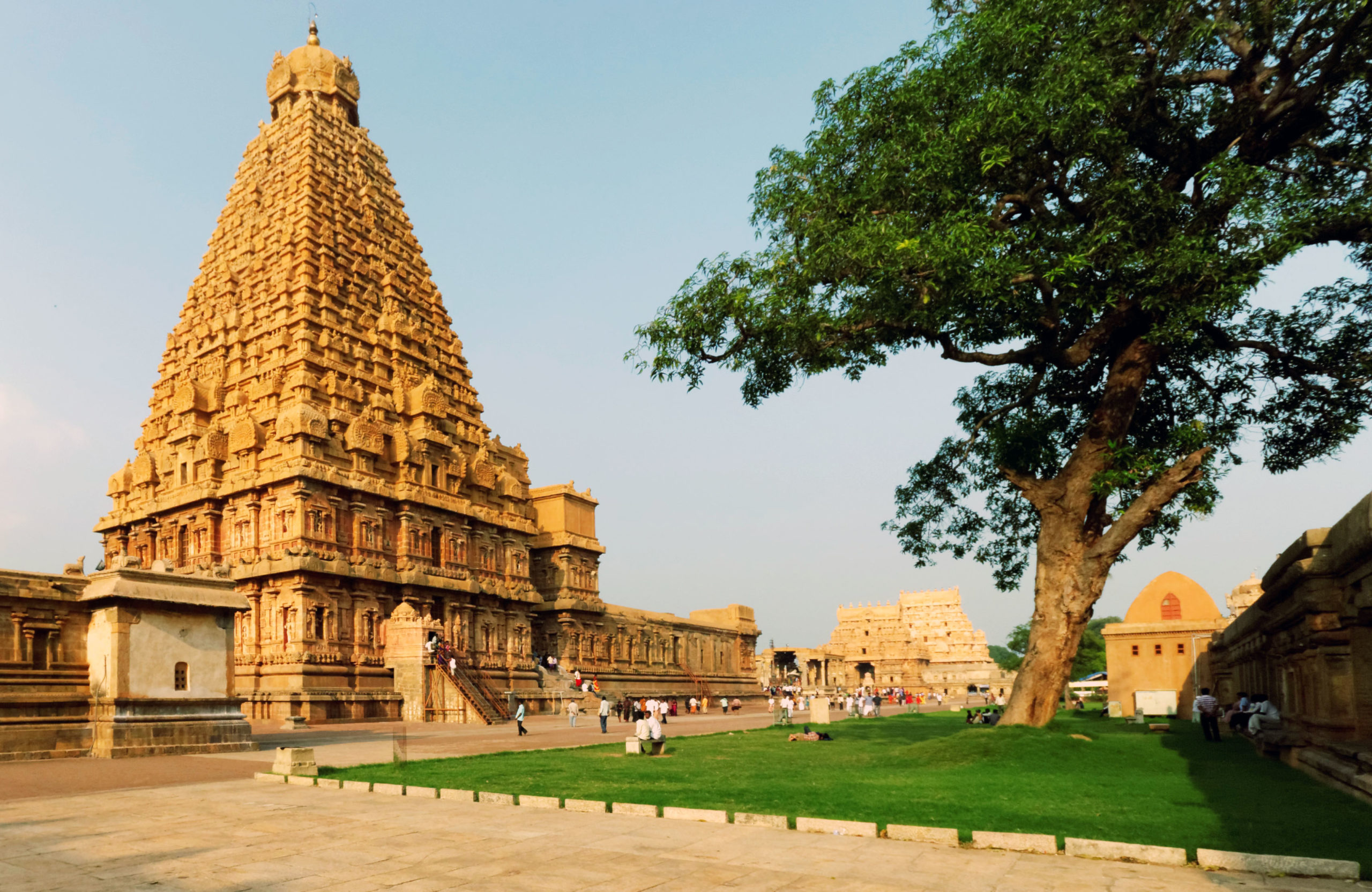
Rajraj got his daughter Kundavak married to Vikramaditya. Besides this, he captured many islands of the Arabian Sea and the Indian Ocean. He conquered Lakshadweep, Maldives or the region called the 12,000 islands of the Ancient Sea and established a vast empire.
He was quite famous not only as a warrior but also as a good ruler. He determined the revenue by establishing self-government and by land measurement. He constructed the ‘Rajrajeswar temple’.
Though he was a devotee of Shiva, he also worshipped Vishnu as well as Buddha. He was called ‘The Great Rajraja’ because of his religious tolerance and broad heart.
“WBBSE Class 7 History 7th to 12th century A.D. explanation”
According to a historian, ‘The great and solid work of Rajraj was the foundation upon which Rajendra built the work of his son is the most authentic testimony to the work of the father.’ (Struggle for Empire. Page 286).
Rajendra Chola I (1014-1044 A. D.)
Rajendra Chola I, the son of Rajraj I was by far the best king of Cholas. He formed a strong naval force which was more powerful than that of his father, and he took military training.
The achievements of Rajendra Chola can be known from the ‘Tirumalai inscription’ and ‘Tanjore inscription’. He advanced towards Bengal by defeating Chalukya, Cher and Pandyas.
It was known from the Tirumalai inscription that he succeeded his expedition to Bengal by defeating the Mahipala I of West Bengal, Gobindachandra of East Bengal and Ramasur of South Bengal.
He took the title ‘Gangoikonda Cholapuram’ just for the memory of his Bengal expedition. He built a new capital named ‘Gongoikondacholapuram’ and dug the ‘Cholaganga Lake’ which was 16 miles long.
Apart from this, he took the title ‘Chola Martandya’ and ‘Uttam Chola’. The Bay of Bengal became the ‘Chola Lake’ only due to the extreme dominance of his Naval force over the sea.
He conquered some portions of the Andaman-Nicobar Islands, Maldives and Brahmadesh. He made Koderam, the capital of Srivijay of the Shailendra dynasty of Malay, Sumatra, a tributary.
state of Cholas. According to Dr Nilkantha Sastri, Rajendra Chola in his old age defeated the Chalukya king Someswar. Within a short time after this, Rajendra Chola died.
Rajadhiraj (1044-1052 A.D.):
Rajadhiraj I, son of Rajendra Chola I, subdued the revolt. of Kerala, Ceylone and Pandya. In 1052 A.D., Rajadhiraj was defeated by the Chalukyaraj Someswar I of Kalyan against the war of Koppam.
Two sons of Rajadhiraj-Rajendra Chola II (1052-1064 A.D.) and Vir Rajendra (1064-1070 A.D.) saved the Chola empire from the attack of Chalukyas. Vir Rajendra defended the attacks of Chalukya of Bengi, Cher and Pandyas.
Vir Rajendra built a winning tower by the side of the Tungabhadra River in memory of his achievements. After the death of Vir Rajendra, his son Adhirajendra Chola was defeated and driven away by the Chalukyaraj Kulotunga I.
Kulotunga I was the grandson of Rajendra Chola I. This Kulotunga became the king of Tanjore by taking the name as Rajendra Chola III in 1070 A.D. and reigned up to 1122 A.D. The Chola empire collapsed during the reign of Rajendra Chola IV.
During this time, the Chola empire totally declined due to the rise of different powers like Hoisal, Pandya, Kaktiya etc. The greatest contribution of Cholas in the history of South India was the establishment of rural-based self-government and the improved system of revenue.
Hence Dr V. A. Smith said. ‘The administration system was well thought and reasonably efficient. Apart from the powerful naval force and strong army, there had been considerable improvement in the fields of literature, art and language.
Chapter 2 Some Streams Of The Political History Of India 7th To 12th Century A.D Rise Of Regional Powers
The struggle began between Palas, Pratiharas and Rastrakutas for control over Kanauj when Harshavardhan died in the year 647 A.D. This is known as the Tripartite struggle.
Many regional kings and independent states arose in this age of political inequality. Among these, the Gurjar-Pratihara race (Pratihar means the guard of the door), of Malwa and Rajputana of western India, the Pala family of Bengal in the east and the Rastrakuta family of Maharastra on the west became very strong.
Particularly the rise of Rajputs was the most significant incident in this age. The 36 communities of the Rajput race became extremely powerful and influential within their respective territories.
Among these communities, Pratiharas of Malwa, Gaharbalar of Kanauj, Chowhans of Delhi and Ajmer, Sholanki of Gujarat, Kalchuri of Chedi, and Chandellas of Bundelkhand were very important.
The Causes of The Tripartite Struggle:
There was political unrest which continued for nearly 100 years after the death of Harshavardhan. Kanauj was the heartland of India, but due to the absence of any able and competent descendent, nobody could acquire the throne of Kanauj and Thaneswar.
As a result of this darkened political vacuum, the neighbouring states started struggling within themselves to acquire control over Kanauj. At first, Pratiharas and Palas got involved in this struggle.
Later on, Rastrakutas also took part in this struggle. There were some causes behind Pala, Pratihara and Rastrakuta powers for their taking an active part in healing up the political vacuum in north India after the death of Harshavardhan.
Firstly, Pala, Pratiharas and Rastrakutas started fighting with each other to become the supreme authority of the social unity which was built up centrally Kanauj at the time of Harshavardhan.
Secondly, the regional states became involved in the battle for establishing their supremacy and prestige like Harshavardhan over Kanauj during the middle of the eighth century.
Thirdly, the favourable geographic situation of Kanauj made the neighbouring states interested. The intention of establishing control and supremacy over the vast and fertile Gangetic valley was another reason.
Fourthly, Kanauj was a trade centre. The adjoining regions were also very prosperous and flourishing. So the importance of Kanuaj was extreme from the viewpoint of economic, cultural and geographical reasons.
For that reason, the struggle among Palas, Pratiharas and Rastrakutas became so intensified on the Kanauj issue. A historian has said, describing the importance of Kanauj, the heart of India. “As Rome was attractive to the militant tribal races like Babilon, Tiuton etc.
Of western Asia, so also the measuring stick was the prestige and supremacy to establish control and supremacy over Kanauj or ‘Mahodayasri’ to the native states during eighth and ninth centuries.”
Description Of Tripartite Struggle:
In the early stage of the tripartite struggle, the Pratihara king Batsaraja (775-800 A.D.) defeated the Pala king Dhramapala (770-810 A.D.) in the battle of Doab after capturing central Asia and Rajputana.
But at that time, the Rashtrakuta king Dhruba (779-793 A.D.) enthroned his subordinate Indrayudh in Kanauj and returned to south India. In this process, he defeated Batsaraja I and then Dharmapala.
Batsaraja also, after losing everything, returned to his land. From the inscriptions of Khalimpur, Munger and Bhagalpur of Narayanpala, it can be known that Dharmapala regained his lost prime and extended his empire upto Kanauj by taking advantage of the military weakness of Rastrakuta and Pratihara.
At this time Dharmapala enthroned one of his subordinate staff Chakrayudh by dethroning Indrayudh, the king of Kanauj. The second phase of the struggle was almost like the first one.
The Pratihara king Nagabhatta (800-825 A.D.) defeated Chakrayudha in the battle of Kanauj and Dharmapala in the battle of Munger respectively and after that, he shifted his capital from Ujjain to Kanauj.
“Easy notes for Class 7 History Chapter 2 WBBSE”
After being defeated, Dharmapala surrendered to Rastrakuta king Govinda III (793-814 A.D.). `the son of Rastrakuta king Dhruba and accepted his domination. Probably for that reason, Govinda III went to the confluence of the Ganges and Yamuna with his spear-armed battalion.
Then he advanced upto the foothills of the Himalayas by defeating the Pratihara king Nagabhatta II, Dharmapala regained his lost prime when Gobinda III went back to the south leaving behind and sacrificing the celebration of his conquest because of the internal conflicts and disputes within his family.
Dr R. C. Majumdar said that though Dharmapala did acquire much power due to his counterparts being powerless, he could not establish his direct domination except in Bengal and Bihar.
| Gurjara-Pratiharas | Rashtrakutas | Palas |
| Batsaraja (786 A.D.) | Dhruba (779-793 A.D.) | Dharmapala (780-815 A.D.) |
| Nagabhatta (815 A.D.) | Govinda (it (794-S13 A.D.) | Devapala (815-855 A.D.) |
| Rambhadra | Amoghbarsha I (814-877 A.D.) | Bigrahapala (855-860 A.D.) |
| Pratham Bhoja (836-885 A.D.) | Krishna II (878-914 A.D.) | Narayanpala (860-915 A.D.) |
| Mahendrapdta (885-910 A.D.) | – | – |
In the third phase of the Tripartite struggle, Devapala (810-850 A.D.), son of Dharmapala first defeated the Pratihar king Rambhadra and Mihirbhoja.
After that Devapala defended the Pratihara king Prathombhoja (836-885 A.D.) when he was advancing towards Kanauj after conquering Bundelkhand, Jodhpur, Kalibangan and Chedi of Tripuri.
As a result, Bhojraja foiled the invasion of Arabians by moving towards the west. Devapala also established his sovereignty by defeating the Rashtrakut king Amoghbarsha I. Towards the last phase, the Pala empire become very weak after the death of Devapala.
The Pratihara king Mihirbhoja conquered Kanauj. The strength and influence of Palas were almost completely demolished when the Pratihara king Mahendrapala (885-910 A.D.) conquered Bengal and Bihar.
On the other side, The Pala king Narayanpala (854-908 A.D.) was completely defeated in the hands of Rastrakutas in the year 860 A.D. The battle between the Rashtrakuta king Krishna II (878-914 A.D.) and Pratihara king Bhojraj was yet to be decided.
After the death of Krishna II, his son Indra III (914-922 A.D.) captured Kanauj after defeating the Pratihara king Mahendrapala or Mahipala (912-944 A.D.) in the year 916.
Being weakened, the Pratiharas gradually were abolished. After that, the Turkish invasion started in India. These Pratiharas were the last Hindu race of ancient India who defended India from the invasion of Muslims for nearly 200 years.
The Result and Significance of Tripartite Struggle:
The Tripartite struggle continued for nearly 200 years. In the history of ancient India, there were very few battles which continued for such a long period. The importance of judging the result and outcome of this battle is great.
- Firstly, due to such a long continuity of the battle, all three sides suffered a tremendous financial loss due to this battle.
- Secondly, The military power of each rival became extremely weak due to such long continuity of this battle.
- Thirdly, due to this tripartite struggle, federal unity was destroyed. As a result, the upsurge of fragmented regional powers became the political speciality in India in the post-struggle age.
- Fourthly, the idea of forming an undivided empire between the Palas, Pratiharas and Rastrakutas did not succeed in the post-Harshavardhan age.
Because some powers after being united initially, completely collapsed later, no empire or sovereignty of a permanent nature grew in the Aryabarta. On the other hand, powers like Chawhan, Chandella etc came up.
Hence some historians called this tripartite struggle a ‘failure’ which continued from the later part of the eighth century to the early part of the tenth century because nobody benefited from this struggle.
